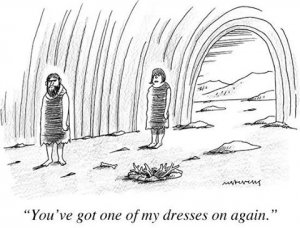You are using an out of date browser. It may not display this or other websites correctly.
You should upgrade or use an alternative browser.
You should upgrade or use an alternative browser.
The Reach Of Speech
- Thread starter Meanderer
- Start date
oakapple
Senior Member
- Location
- Oxford England
Loved the discovery of fire vid.
SifuPhil
R.I.P. With Us In Spirit Only
- Location
- Pennsylvania, USA
Loved the discovery of fire vid.
Me too - I liked when his beard caught on fire.
SifuPhil
R.I.P. With Us In Spirit Only
- Location
- Pennsylvania, USA
"Speak Like Caveman" - what's with the jug of water? Scrawny caveman need to stay hydrated?
RadishRose
SF VIP
- Location
- Connecticut, USA
"Speak Like Caveman" - what's with the jug of water? Scrawny caveman need to stay hydrated?
"Reptilian brain make jughead"....our road rage is classic reptilian brain response, activated when one feels threatened!
http://www.eruptingmind.com/beating-the-reptilian-brain/
Butterfly
SF VIP
- Location
- Albuquerque, New Mexico USA
Actually I think the first words that man said were ' mine is bigger than yours !'
And they're still having that same discussion!
SifuPhil
R.I.P. With Us In Spirit Only
- Location
- Pennsylvania, USA
Actually reptilian brain thinking has its place in modern society - at least, that's what I teach in my self-defense classes.
Stone Age Art Holds Hints of Language
Ancient cave art can give modern observers a unique glimpse into the minds of people who lived long ago. Stone Age art in European caves is best known for its beautiful paintings of animals like deer, horses, and mammoths. Recently, researchers investigated seldom-studied symbols appearing non-randomly among the paintings that may indicate that Stone Age people could communicate with written symbols.
The University of Victoria's Genevieve von Petzinger and April Nowell catalogued 26 specific markings, including a hand, a wavy line, and a spiral. They even found matching markings on some Ice Age jewelry.

The problem is that if these previously overlooked patterns do represent some form of writing, then they appear "25,000 years earlier" than when researchers believed writing originated.1 Some of the cave markings are supposedly 30,000 years old.
But Scripture indicates that the very first humans were able to read and write. Adam may have even signed his own name at the end of his written portion of Genesis, recorded as "This is the book of the generations of Adam."
The Observer reported:
This testimony on rock walls – in daubs of ochre and charcoal mixed with spittle and fat – shows that our hunter-gatherer ancestors could depict the world around them in a startlingly sophisticated way. As the art critic John Berger once said of these painters, they appear to have had "grace from the start".1
In this regard, the testimony on the rock walls matches the testimony of Scripture. Nowell told The Observer:
Caves are funny little microcosms that protect paint. If it wasn't for the fact that these people decided to put some of their art there, then we might never have realised just how advanced they were artistically. In fact, the populations that produced these artists were people just like you or me.
http://www.icr.org/article/6752/288
Ancient cave art can give modern observers a unique glimpse into the minds of people who lived long ago. Stone Age art in European caves is best known for its beautiful paintings of animals like deer, horses, and mammoths. Recently, researchers investigated seldom-studied symbols appearing non-randomly among the paintings that may indicate that Stone Age people could communicate with written symbols.
The University of Victoria's Genevieve von Petzinger and April Nowell catalogued 26 specific markings, including a hand, a wavy line, and a spiral. They even found matching markings on some Ice Age jewelry.

The problem is that if these previously overlooked patterns do represent some form of writing, then they appear "25,000 years earlier" than when researchers believed writing originated.1 Some of the cave markings are supposedly 30,000 years old.
But Scripture indicates that the very first humans were able to read and write. Adam may have even signed his own name at the end of his written portion of Genesis, recorded as "This is the book of the generations of Adam."
The Observer reported:
This testimony on rock walls – in daubs of ochre and charcoal mixed with spittle and fat – shows that our hunter-gatherer ancestors could depict the world around them in a startlingly sophisticated way. As the art critic John Berger once said of these painters, they appear to have had "grace from the start".1
In this regard, the testimony on the rock walls matches the testimony of Scripture. Nowell told The Observer:
Caves are funny little microcosms that protect paint. If it wasn't for the fact that these people decided to put some of their art there, then we might never have realised just how advanced they were artistically. In fact, the populations that produced these artists were people just like you or me.
http://www.icr.org/article/6752/288
oakapple
Senior Member
- Location
- Oxford England
Love both those cartoons Meanderer, but my favourite [of all the cartoons you have posted] has to be 'The Tomb Greeter' as that one had me laughing even when I just thought of it!





